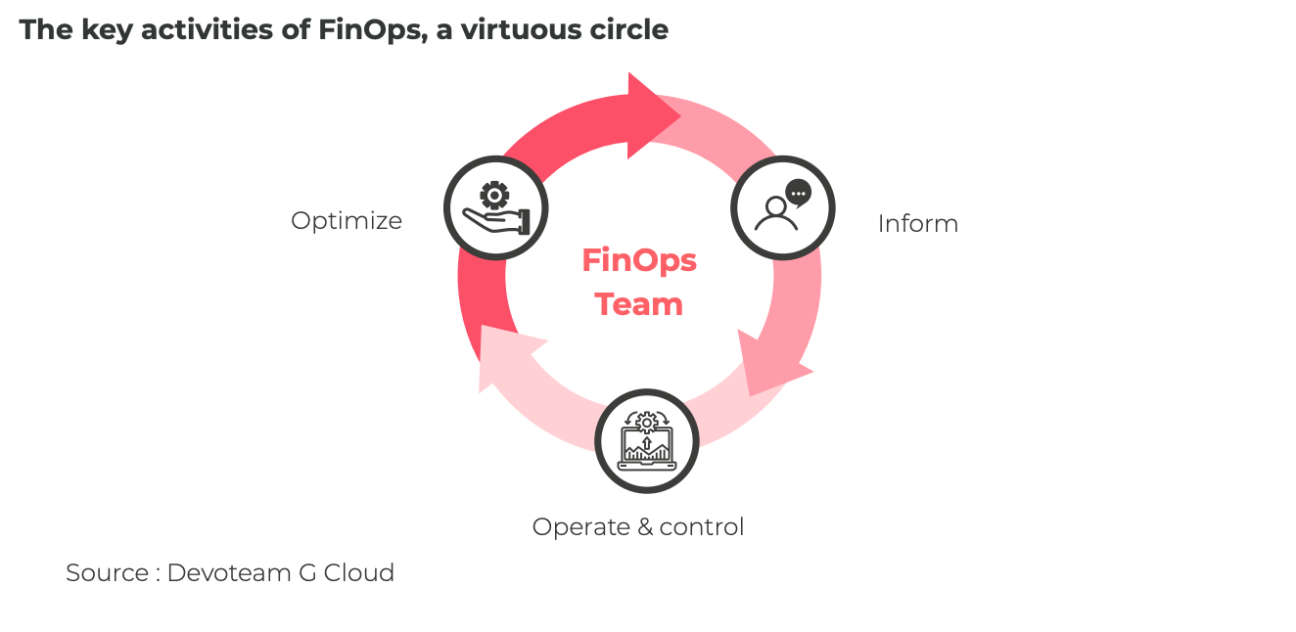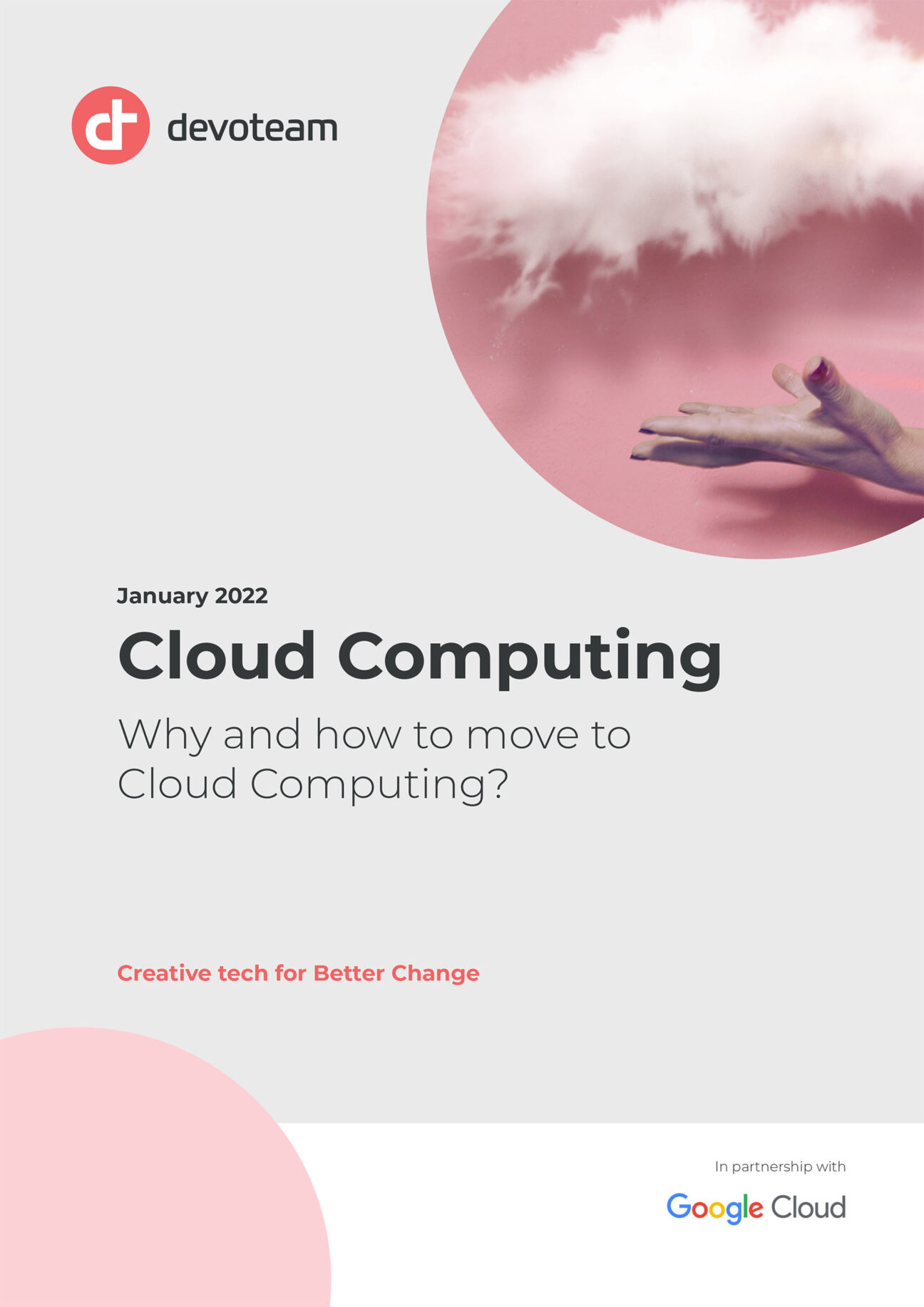In this chapter you’ll read:
- Change management and “Training & Change”
- IT outsourcing: Who operates the environments?
- Financial management in the Cloud (FinOps)
The year 1981 marked the arrival of micro-computing with the PC (Personal Computer) created by Generation X and its great ambassadors such as Steve Jobs and Bill Gates. These innovations are based on individual functions and a classification logic inherited from the visual arrangement of everyday items. The wardrobe, for example, is transcribed in the form of directories. Today, with generation Z, it is time to move from this individual logic based on a well-established hierarchy to a collective, team logic. A logic made possible in particular by Google, its search engine, its collaborative Workspace suite (formerly G Suite) and Cloud-based platforms.
From the outset, with the implementation of its search engine by Larry Page and Sergey Brin, Google has induced an increasingly important capacity for ingesting and digesting the information accumulated by the datacentres. The Mountain View firm remains a forerunner
regarding the ways of accessing information but also in the uses that can be made.
New and inspiring sources
We are in a so-called “access civilisation”, which is causing a new balance between the “historical” holders of knowledge and power and the “others”. Google has undeniably shifted the balance. For some years now, we have been gradually moving into an era of communities of thought, of sharing and pooling of knowledge.
Our brains are interconnected and access information spontaneously. In a very concrete and pragmatic way, Google gives us easy access to all types of data: documents (Gmail, Google Apps, Google Drive, etc.), photos, videos (YouTube), etc., whether through our smartphones, our tablets, our PCs, our Macs, but also our refrigerators and tomorrow our cars!
Wearable computing has a bright future. But it is the democratisation of access to information that makes the use of these products so meaningful.
The human factor must be taken into account
These new sources of knowledge are full of ideas and creativity and open up a whole new world of possibilities. New jobs are emerging and the managerial dimension is changing. We can no longer neglect its importance, we must become aware of our necessary collaborative transformation, let’s not ignore it.
Information management in a company has become as important as production management. So, if a move to the Cloud is sometimes wrongly considered as a simple change of technical brick, it is also (and above all) a paradigm shift in the way applications are designed, deployed and operated. It is important to take into account the impacts and changes on processes and to support the development of all users’ skills through dedicated training plans.
Change management and “training & change”
A successful Cloud transformation cannot be achieved without team support, which often involves a training process. This is an undeniable key factor for success, which involves identifying the different types of people and building a specific, adapted training programme for each one. The employees in charge of setting up the new Cloud environment, for example, or in charge of systems maintenance, must be perfectly comfortable using the console and/or command lines, network configuration, security management, etc. It is therefore necessary to ensure that they are given the means to upgrade their skills by offering them extensive courses, whether it be a complete discovery of the platform with an introduction to the concepts for beginners, or preparation for certification for the more advanced. Data Scientists or Data Engineers will be much more interested in exploiting the platform’s data services and the way to store or transform structured or unstructured data.
IT outsourcing: Who operates the environments?
Most customers have their own modus operandi and have been working with their suppliers on premise for many years. A migration to the Cloud is necessarily accompanied by an overhaul of processes: “If you do the same thing in the Cloud as you did before, it is not only difficult to reap the benefits but also, and above all, you are exposed to the same problems! We therefore need to change our paradigms and our way of working,” explains Nicolas Sarrazy.
According to him, change and the fear of not finding one’s way in the new environment remain the most difficult part: “This can indeed be an obstacle. For our clients, our support can prove invaluable because we are experienced in this environment. At the end of the chain, once the project has been set up, it must be able to be operated. With our Managed Service Provider (MSP) service, we offer a complete framework.
Companies need an answer; our offer is based on five main IT pillars:
- IT Ops and supervision monitoring of services
- SecOps supervision and monitoring of safety
- DevOps, which concerns the integration of development teams within organisations to facilitate exchanges between the app and operations teams
- Application maintenance
- FinOps (financial management)
Financial management in the Cloud
To adapt to the new models generated by Cloud Computing and the new forms of expenditure associated with it, financial management has also had to rethink itself by adopting the colours of agility and borrowing from DevOps to inform, optimise, control and operate.
Inform
- Provide a comprehensive overview of Cloud usage and associated costs
- Sharing the best practices of using the Cloud
- Compare costs according to performance and service levels required
- Set up budgets and alert mechanisms for financial monitoring
Control and operate
- Implement the governance rules for each Cloud service
- Ensure that services are used correctly • Continuously measure the alignment between the objectives and the output of the application (speed, quality, costs, performance)
Optimise
- Make the best use of Cloud providers’ solutions to optimise costs
- Advise on changes to apply to the applications in order to best adjust the use of the services
- Increase automation over time
The key activities of FinOps, a virtuous circle

Case study: Following the implementation of a Cloud architecture, a renowned French company specialising in online event sales found itself unable to control its costs and anticipate budgetary expenditure, without clearly understanding the reasons. In order to restore flexibility to the day-to-day work of its employees, particularly the Data Scientists, the company set up personalised invoices and dashboards to monitor usage and the associated costs. Thanks to a detailed analysis of expenses, it was possible to draw up recommendations and optimise them. The benefits speak for themselves: 30% savings generated in the third month and a stabilised Cloud budget under control.
A new organisation in agile mode for:
- Focus on creating and supporting services for the organisation. Cost is introduced as a measure in the same way as performance measures to be monitored and controlled.
- Search for the best solution by integrating cost as a decision criterion for continuous optimisation.
Use reports provided by the FinOps team for accounting and forecasting. Work closely with FinOps specialists to understand historical billing data so that they can develop more accurate cost models.
